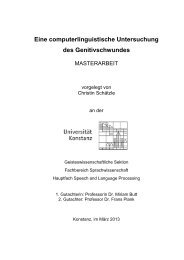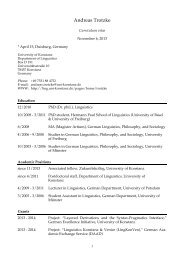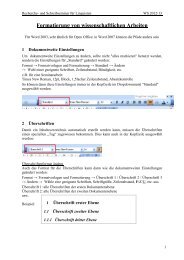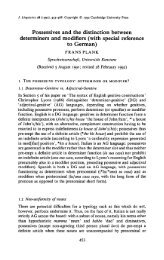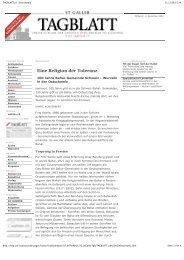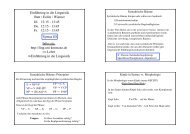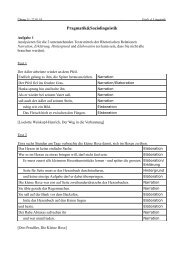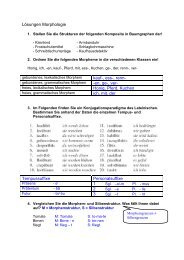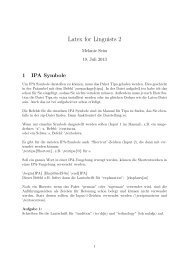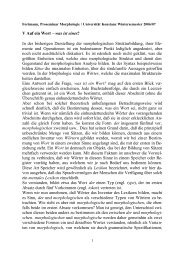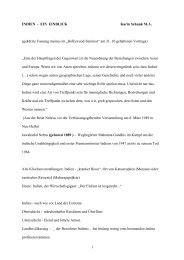5. Morphology in Relation to Phonology
5. Morphology in Relation to Phonology
5. Morphology in Relation to Phonology
You also want an ePaper? Increase the reach of your titles
YUMPU automatically turns print PDFs into web optimized ePapers that Google loves.
F. Plank, <strong>Morphology</strong> I: <strong>5.</strong> <strong>Morphology</strong> <strong>in</strong> <strong>Relation</strong> <strong>to</strong> <strong>Phonology</strong> 28<br />
To first illustrate what is not at issue here, but what is most common:<br />
morphology apply<strong>in</strong>g <strong>to</strong> morphologically def<strong>in</strong>ed units.<br />
In Warlpiri (Pama-Nyungan, Australian) PLURAL is expressed through<br />
reduplication. The reduplicand is here identified morphologically:<br />
reduplicated is the word stem (or the word itself, if there are no grounds<br />
for dist<strong>in</strong>guish<strong>in</strong>g stems and words <strong>in</strong> this language), whatever its<br />
phonological shape (which segments its conta<strong>in</strong>s, long or short, where<br />
word stress lies, etc.):<br />
SINGULAR<br />
PLURAL<br />
kurdu kurdu-kurdu 'child – children'<br />
kam<strong>in</strong>a kam<strong>in</strong>a-kam<strong>in</strong>a 'girl – girls'<br />
mardukuja mardukuja-mardukuja 'woman – women'



